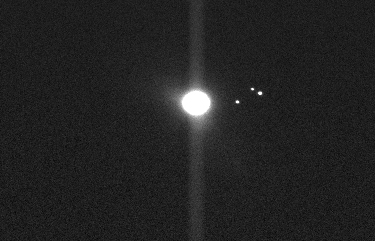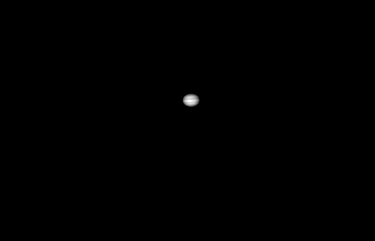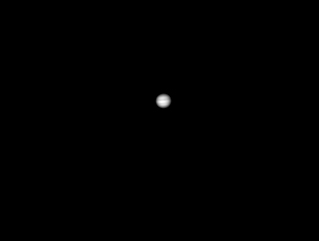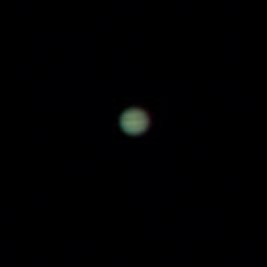
Jupiter, .2 sec: Taken 9.10.2000 at Goodsell Observatory through an LX200 at f/10
My first pictures were of Jupiter and Saturn, because they were bright, easy to find and quick to
image (my first, uncovered, images of them were about .02 seconds in length). Many of these
pictures did not turn out very well: though that's what often happens with planetary imaging, which is
very susceptible to atmospheric seeing and the will of the gods.
This first one is what Jupiter looks like the first time you image it in CCDOPS, before adjusting
the contrast. Those three dots to the upper right of it are three of its moons (The four brightest
moons are Ganymede, Io, Europa and Callsto). These three are Callisto (topmost and dimmest), Io
(left most and middle brightness) and Ganymede (right most and brightest). Europa was behind
Jupiter when I took this picture (it would have been visible if I had taken the picture about 3
hours later or about two hours earlier).

Jupiter, .2 sec: Taken 9.10.2000 at Goodsell Observatory through an LX200 at f/10



This image involved resampling the pixels, combining the three filtered images, moving them so that they would overlap and finally doubling the size of it, to make detail more visible. I discovered late in the term that taking very short exposures very close together is the best way to get good planetary images. The RGB images for this were taken a few minutes apart, so it is not as clear as it might be. I have not had time yet to try to improve on these.